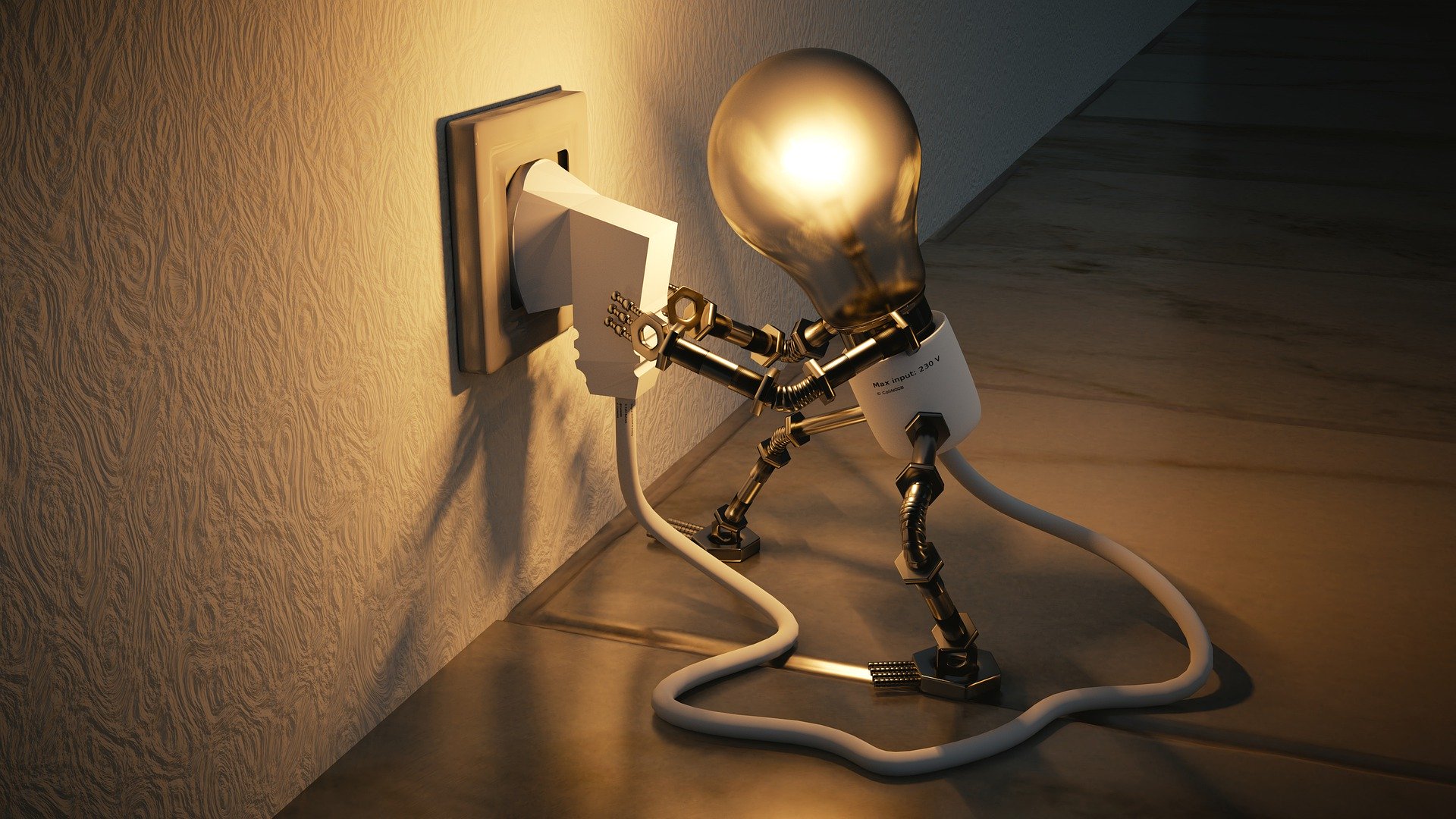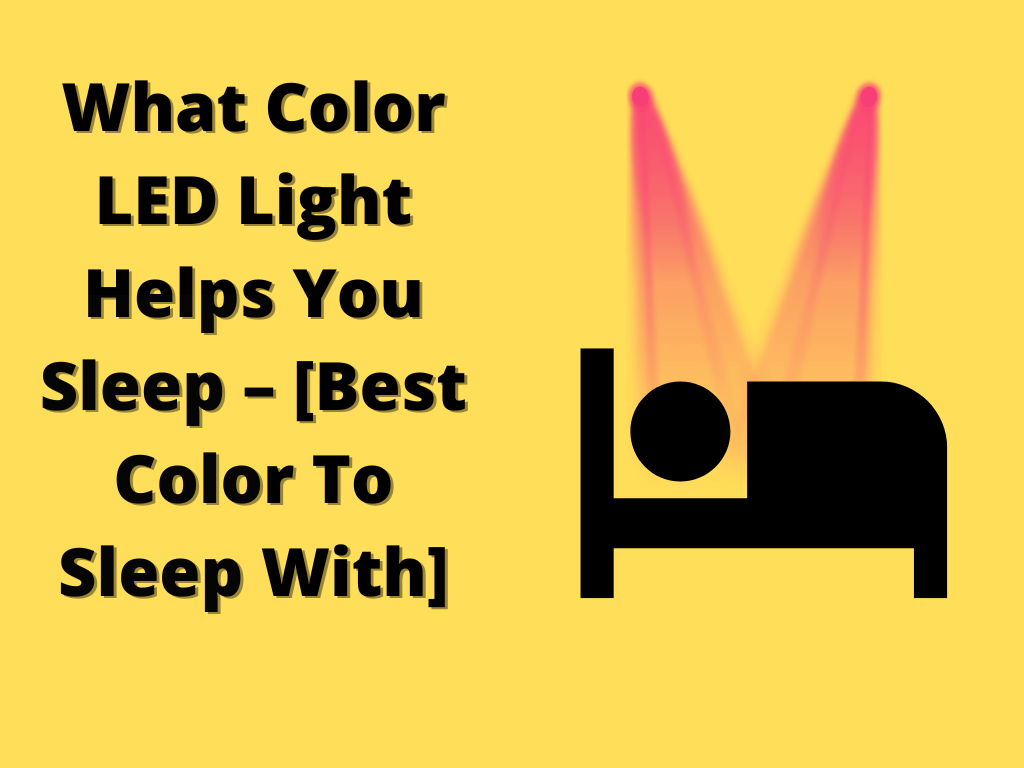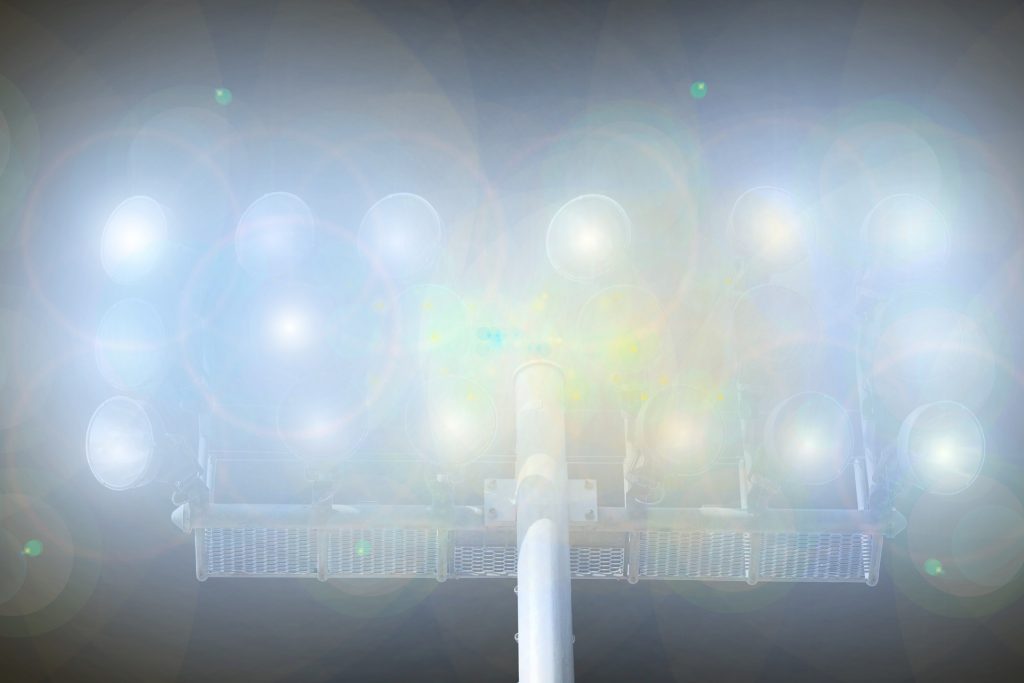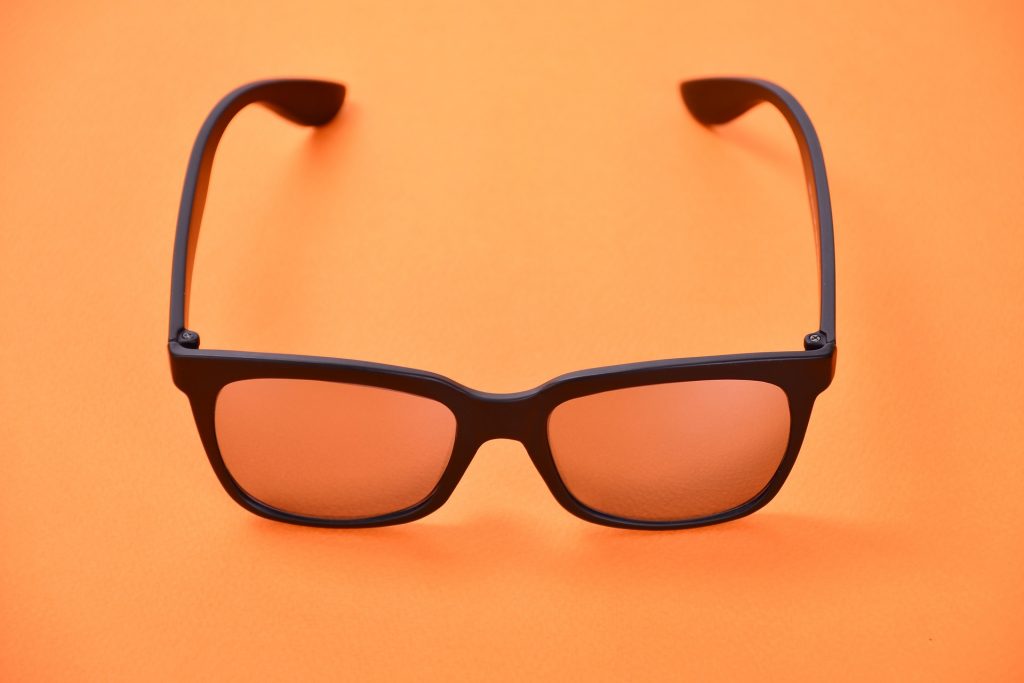Did you know that different light colors are a lot better than others for good sleep?
It’s true! The wrong light color in your bedroom can make it harder to fall asleep and stay asleep throughout the night.
But what is the best color of light to sleep with?
Let’s look at various colors of LED lights and how they may affect your sleep.
- What LED light color is best for your sleep?
- Red LED Light Bulbs Are Best For Sleep
- 1. Sleep Aid Red LED Night Light Plugin
- 2. AmazonBasics 60 Watt Equivalent Red
- 3. JandCase C7 Red LED Bulb, E12 Candelabra Light Bulb
- 4. Kasa Smart Light Bulb, LED Multicolor
- Additional Useful Sleep Products for a Better Night’s Rest
- Light and Sleep
- Light plays a major role in your sleep cycle, more than most of us realize.
- So what is the best color for night lights?
- Did you know that medical research is confirming improved sleep from red light therapy in a host of clinical trials?
- How does light help you with sleep?
- Blue Light Blocking Glasses
- Your eyes and sleep
- Other light colors that help you sleep better
- Blue light and its effect on sleep
- Green light is in the middle of the visible light spectrum
- Bright lights in general can have an impact on sleep
- Warm light colors are better for sleep
- Conclusion For What Color LED Light Helps You Sleep?

Many people are unaware that light has a big impact on our sleep cycle, and that certain types of led light colors are preferable to others for getting a good night’s sleep. A relaxing light color will help you feel sleepy and prepare your body for sleep, while a stimulating light color will do the opposite.
What LED light color is best for your sleep?
A red light color is best for sleep because it has a low color temperature, far lower than regular sunlight.
You can be immersed in red light at night without giving your body a jolt and altering your internal clock as blue light does.
If you’re having trouble sleeping and you’re surrounding yourself with unnatural blue light every night, that’s likely a big factor.
Sleep researchers have found that blue light suppresses the production of melatonin, the hormone that makes you feel sleepy.
Red light, on the other hand, does not suppress melatonin and may actually increase it.
Switching to natural red color light in the evenings can help your body ease into its sleep cycle more naturally.
- A red light bulb for sleep produces a wavelength of light that’s similar to the setting sun.
- Red night light bulbs are available in a wide variety of shapes and sizes to suit any need
- Red light wavelengths force your body to release more melatonin- a sleep hormone- which makes you feel drowsy and prepares your body for sleep.

Red LED Light Bulbs Are Best For Sleep
1. Sleep Aid Red LED Night Light Plugin

Night light color matters because different colors have different effects on our brains and bodies.
Red light is the least likely to suppress melatonin production and disrupt sleep. In fact, red light at night can actually increase melatonin production.
- Dusk to Dawn Auto Sensor
- Low Blue LED Promotes melatonin Production and Healthy Sleep
- ON-Off-Auto Toggle
- 2-Pack
With this nightlight, you can set it and forget it. You will get a 30,000-hour lifespan of super energy saving and it will just cost you less than 10 cents a month.
This red light has long a wavelength LED source that promotes sleep and it will not hinder the sleep hormone melatonin production like other blue light sources.
You will get 7 LEDs that are built-in and it`s much brighter than standard red LED night light so it provides sufficient visibility yet comfortable for the bedroom.
The daylight sensor turns off the night light when the surrounding environment is lit.
I also like that the light does not block the use of the second plug on the wall outlet.
2. AmazonBasics 60 Watt Equivalent Red

- Non-Dimmable
- A19 LED Light Bulb
- Red
- 2-Pack
This bulb will last over 9 years if you are planning to use it for about 3 hours daily.
You can switch on one of these in the evening, especially if you want to do late work or reading and don`t want to get your sleep pattern disturbed.
It is also a great idea for seniors who may need to get up during the night. These will guide them without being harsh or glaring.
3. JandCase C7 Red LED Bulb, E12 Candelabra Light Bulb

- Christmas Holiday Decorative Light
- Tiny Salt Lamp Bulb
- Porch
- 4 Pack
- Not dimmable
This red plastic C7 light bulb is really popular for its mini shape and fashion color. With its E12 base, you can install it on lamps. You can also use it for ceremonies, like Halloween, Christmas, Easter, or other festivals, creating a cheerful and funny atmosphere for your family or parties. The lifespan is 30000 hours!
4. Kasa Smart Light Bulb, LED Multicolor

This smart bulb has a wide range of red colors to choose from. It’s also dimmable if you find the light output too bright.
If you are trying to avoid the harmful blue light later in the day, you can use the app and set the Kelvin range to 2700-3500, and by doing that you don’t get any blue light at all. You should feel much more sleepy when you’re going to bed if avoid blue light exposure during the evening.
I also like that you can set the bulb to circadian mode, by doing that, the bulb will be bright white in the morning with no blue light filtering and as the day progresses, it will start to filter out the blue light.
Additional Useful Sleep Products for a Better Night’s Rest
| Brand | Type | Check Price |
|---|---|---|
Marpac Dohm Classic | The Original White Noise Machine. | $ |
YnM Weighted Blanket | YnM weighted blanket offers a natural way to help calm your body for a restful night of sleep. | $ |
InnoGear Essential Oil Diffuser | Diffuser for Essential Oils. Lavender Oil is a popular choice for better sleep. | $ |
Light and Sleep
Health experts have known for some time that exposure to all kinds of light supports regulating the body’s internal clock which regulates everything from appetite and metabolism to hormone levels, and immune function and that’s why humans get sleepy when it’s dark outside and start to wake when it’s light out.
Of course, this all developed way before humans figured out how to make light accessible at all hours of the day. We have unbelievable lighting technology now, but our bodies still respond to light like they always have.

Light plays a major role in your sleep cycle, more than most of us realize.
One interesting thing that research has found out is, that it may be more than light affecting our circadian rhythms, it may be the color of the light that actually makes a difference.
If you have to sleep with a night light on you might think that blue and white lights might create a calming sensation and help you sleep best. But, a new study shows that blue light has a great influence on mood, followed by white light. It means that we would not be relaxed or calm before sleeping if the light color is blue or white.
So what is the best color for night lights?
Stare at a bright, somewhat bluish light, like the one from your smartphone, tablet, or television, and your body sends a signal to your brain to stop producing melatonin, a strong hormone that helps you fall asleep.
Sadly for many of us, waking in the middle of the night, either because of a child or because our bodies can’t seem to unwind, is an all too familiar occurrence, and the resulting consequences can have a permanent effect on the whole day.
Many people who have trouble falling back asleep all make the same blunder when they get up in the middle of the night, they turn on a bright light bulb.
We’ve recognized for some time that blue light can mess with our bodies’ internal clocks. A study published in the Proceedings of the National Academy of Sciences found that our light-emitting e-readers were disturbing our sleep by suppressing the melatonin production in our bodies and increasing a feeling of wakefulness. The study had people read from iPads and from regular books and discovered that those who read from iPads had a much harder time falling asleep and had less REM sleep when they finally fell asleep.

Did you know that medical research is confirming improved sleep from red light therapy in a host of clinical trials?
Recent 2018 research out of Brazil evaluated the effects of red light therapy and other treatments on patients who suffer from migraine headaches. Researchers found that not only did red light therapy decrease the number of headaches, but it also was the only treatment that improved patients’ sleep disorders.
Red light therapy has been studied closely and found to improve sleep quality as well. In one study performed among elite women basketball players, the participants tried 14-30 minute light therapy sessions once a night for 14 nights. The short-term results showed improved sleep and the researchers found red light therapy to be a nonpharmacologic and non-invasive therapy for treating sleep disorders.
How does light help you with sleep?
We rose with the sun and prepared for sleep with the sunset before using artificial light sources. The color temperature of the sun is approximately 2,000 Kelvin throughout both sunrise and sunset. Replicating red or orange color temperatures similar to the sunrise and sunset might be ideal for sleeping and relaxation, particularly when combined with total darkness.
If you’ve had difficulty sleeping, you might have tried or heard about melatonin. It’s a naturally-occurring hormone that controls sleep and wakefulness. Exposure to light after dark hinders the body’s ability to release melatonin, increasing the time it takes you to fall asleep and stopping you from staying asleep. If you’re in red light before bed, you’ll create more melatonin than if you’re surrounded by synthetic blue light, and that can assist you to fall and stay asleep.
Restless sleepers and sleep-deprived parents know better than anyone the valuable commodity known as a good night’s sleep. It’s no secret that bad sleep and the resulting tiredness make us less healthy and less productive in the short and long term.
What fewer people realize is that the light we’ve been exposed to plays a tremendous role in our capacity to sleep. Red light therapy has been found in many clinical studies to support better sleep, and there’s a large base of research showing that 7-8 hours a night for adults is not just a luxury, but a must for people seeking optimal performance and recovery.

A lot of people are used to sleeping with the lights on at night and always choose a blue or white light color. Because many of us think that blue and white lights might make us feel relaxed and will help us sleep better.
On a very fundamental level, simply reducing your exposure to blue light before sleep should help. The Harvard summary states that avoiding looking at bright screens two to three hours before bed can make a difference, so that means minimizing your phone, tablet, and TV time before hitting the sack.
If you don’t want to stop using electronics entirely, there are a couple of options for reducing blue light exposure. One is to buy a pair of blue-light blocking glasses. These special-purpose glasses have yellow-tinted lenses that claim to block out the blue end of the light spectrum.
If you want to take things a step further, you can also buy a blue light filter for your devices. These come in the form of screen covers or apps that change the color of your device’s display to reduce blue light exposure.

- A study published in the Journal of Adolescent Health found that when young people under the age of 20 wore orange-tinted glasses at night while looking at the screens, they seemed more sleepy than those who wore nothing or their normal, clear-lens glasses.
- The Harvard summary backs that up, suggesting wearing blue-blocking glasses if you work a night shift or need to use electronics frequently at night.
Blue Light Blocking Glasses

Your eyes and sleep
There are some specific light-sensitive cells called ipRGCs located in the retina of our eyes. Any light can be detected by these cells which is helpful for our brain to regulate the body’s clocks. In simple terms, they help to determine when people feel sleepy and awake. These ipRGC cells are most receptive to blue wavelengths of light and least sensitive to red light.
Other light colors that help you sleep better
If you don’t have a red light, you can use other light colors instead, such as light yellow, pink or other colors leaning to red, but total darkness is also a good option if you don’t need to have the lights on.
But if you are afraid of darkness and must have the lights on when sleeping, it may be better to have one that gives off a reddish light rather than white light.
Why not give it a try at home and experiment with how the shift in color makes you feel.
FAQ
Blue light and its effect on sleep
Blue light is everywhere. The sun emits blue light, as do our electronic screens — computers, tablets, cell phones, and LED televisions.
We may not be aware of how frequently we’re exposed to modern light sources, such as laptops, TV sets, and smartphone screens, that emit blue light. All of these devices produce a lot of blue light, which disrupts sleep production and confuses natural circadian rhythms.
- Some people believe that blue LED lights have an influence on animal and plant behavior since LEDs can produce light in hues that the sun does not.
Green light is in the middle of the visible light spectrum
While green light and blue light have different wavelengths, they both suppress melatonin and can cause disruptions in sleep.
Greenlight can be found in these types of electronic screens — computers, tablets, cell phones, and LED televisions.
Bright lights in general can have an impact on sleep
While blue light may have the most well-known association with sleeplessness, any type of bright light can have an impact on sleep. This is why it’s important to keep lights dim in the hours leading up to bedtime and to avoid using electronics with bright screens in the bedroom.
Warm light colors are better for sleep
If you’re looking for a light color to help you sleep, your best bet is to choose one that leans toward the red end of the visible light spectrum.
Experts claim that red or amber light may help us feel better as a whole and mentally, these colors include light yellow, pink, and other colors that are closer to red than blue.
Conclusion For What Color LED Light Helps You Sleep?
There are a few different colors of LED lights that can help you sleep better.
We’ve outlined the best color to sleep with, and why it is beneficial for your eyes and overall sleep quality.
If you’re looking for a way to get better rest at night, try using a light that emits red or amber wavelengths instead of blue light.
